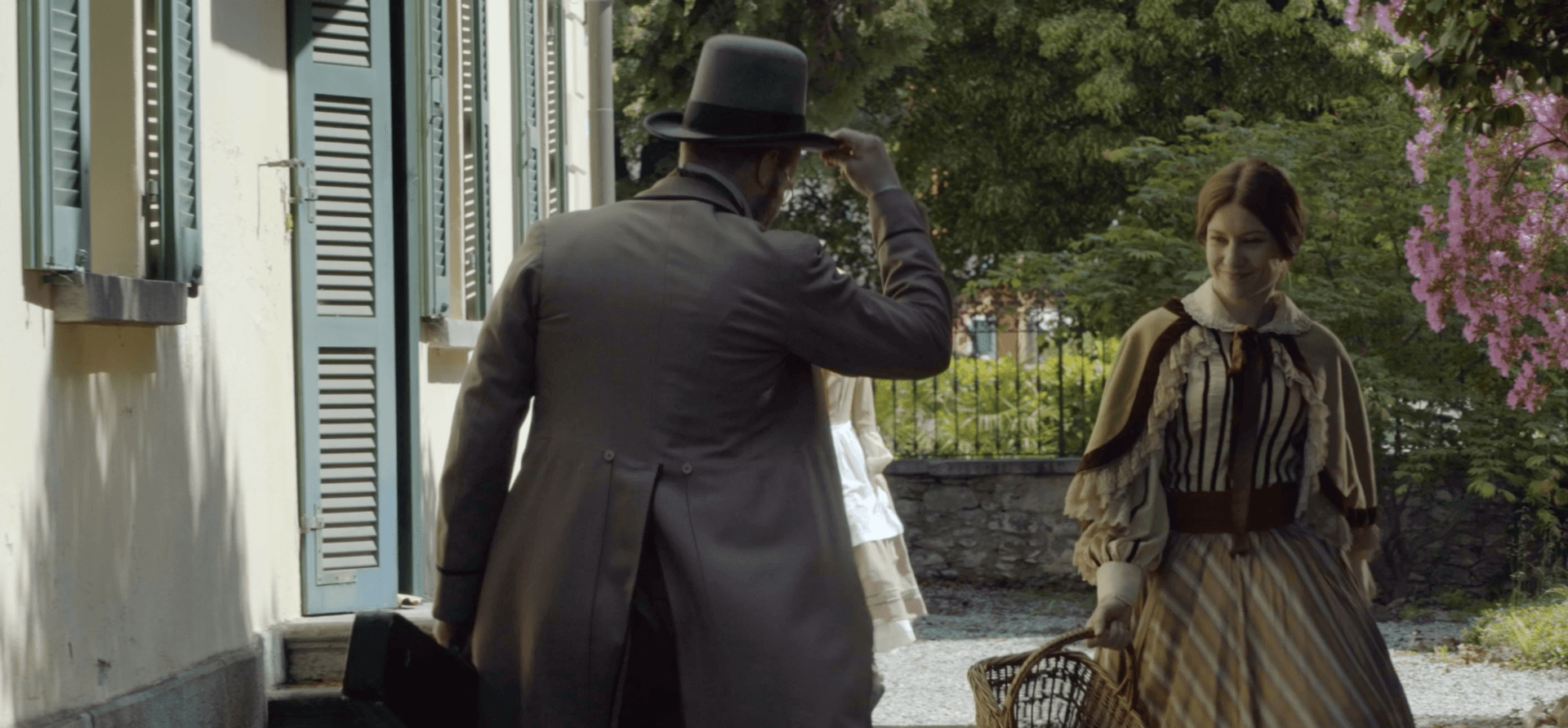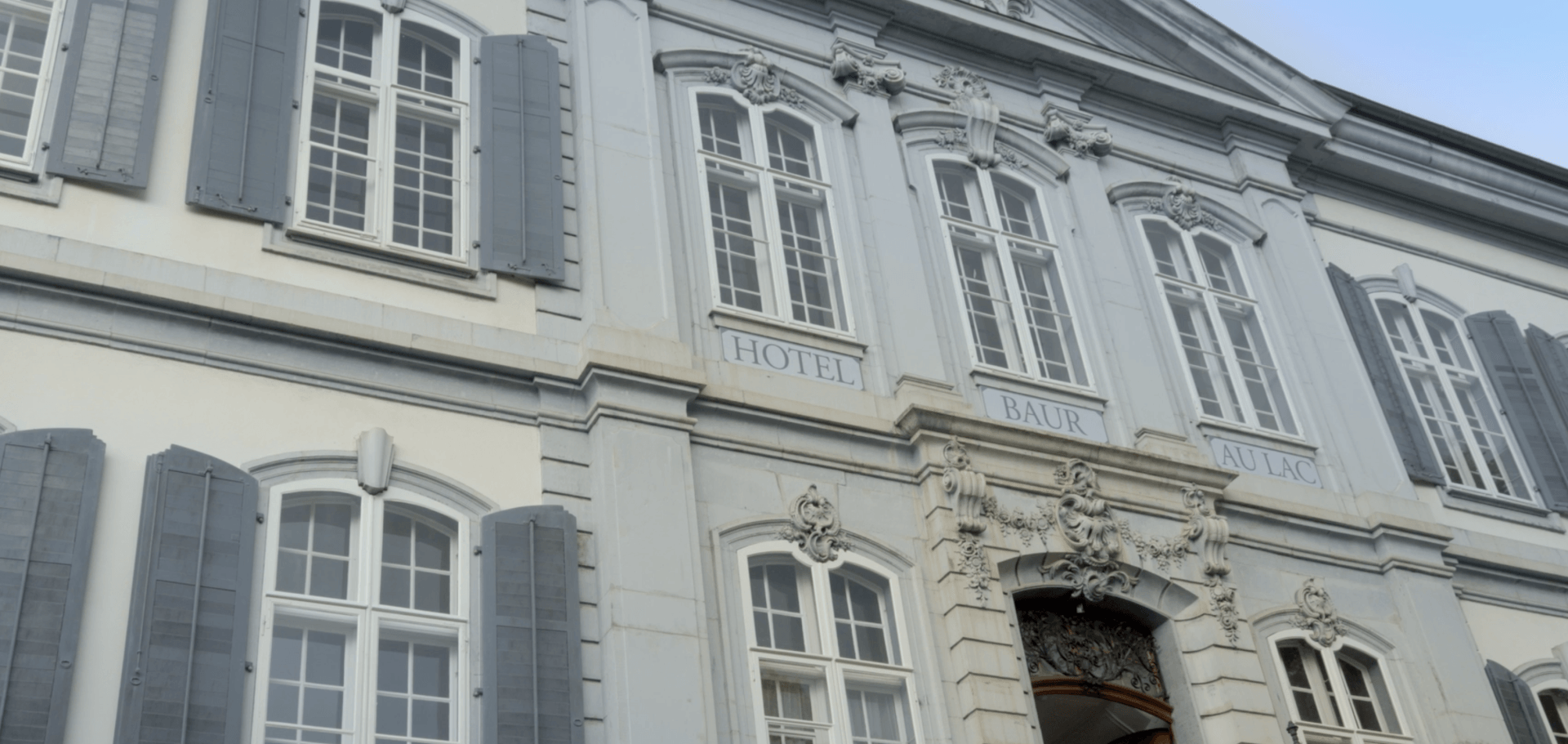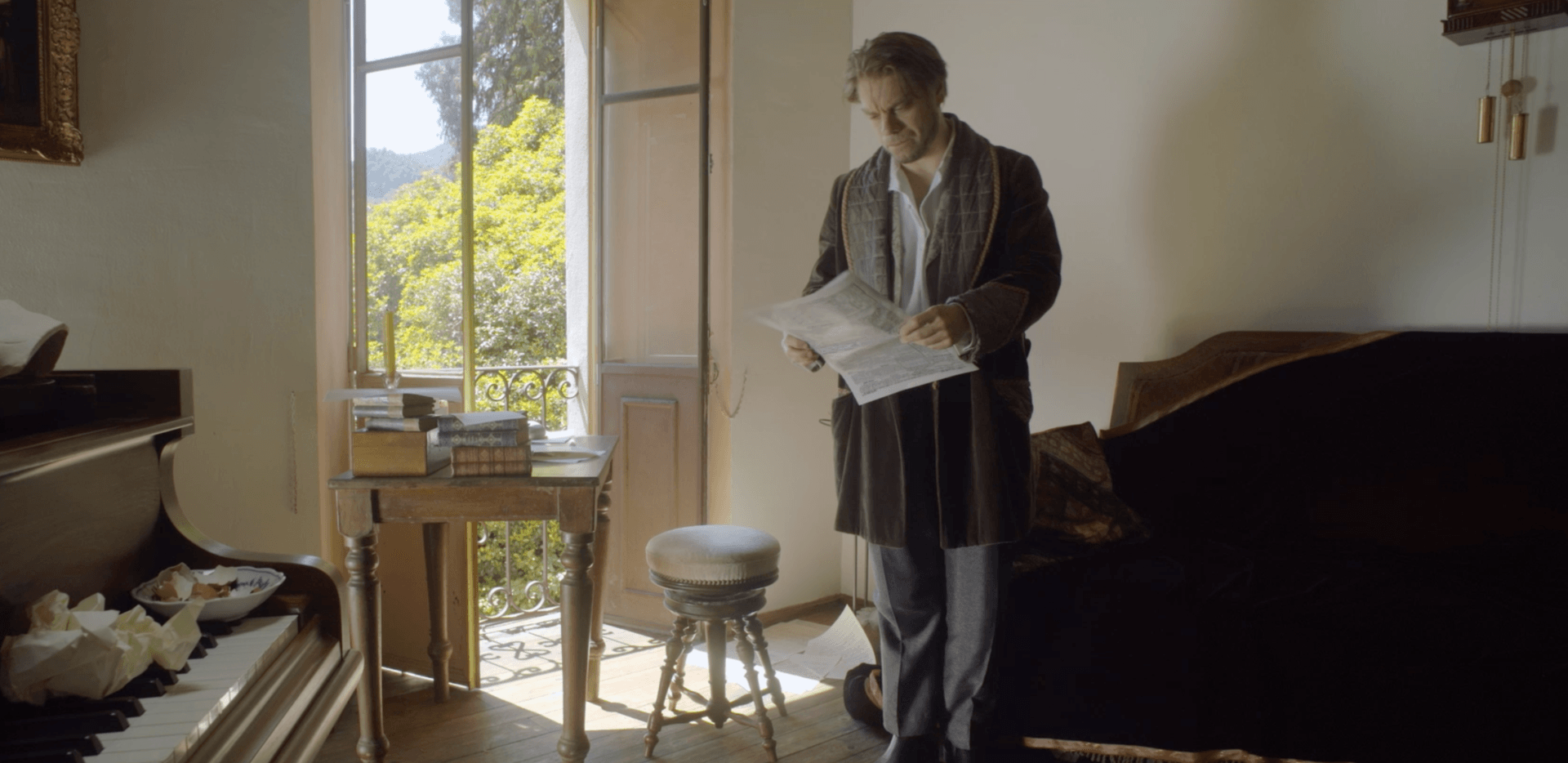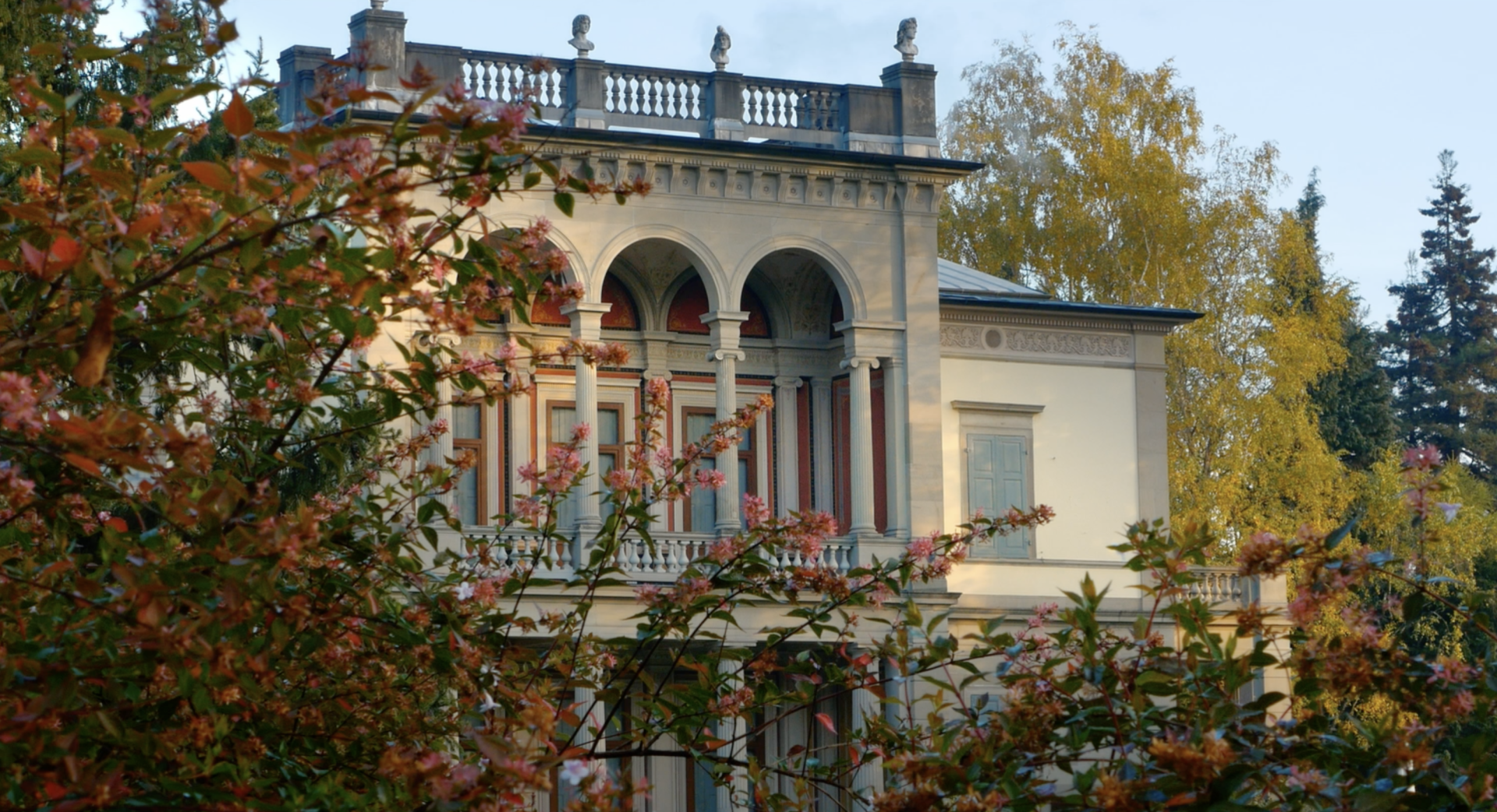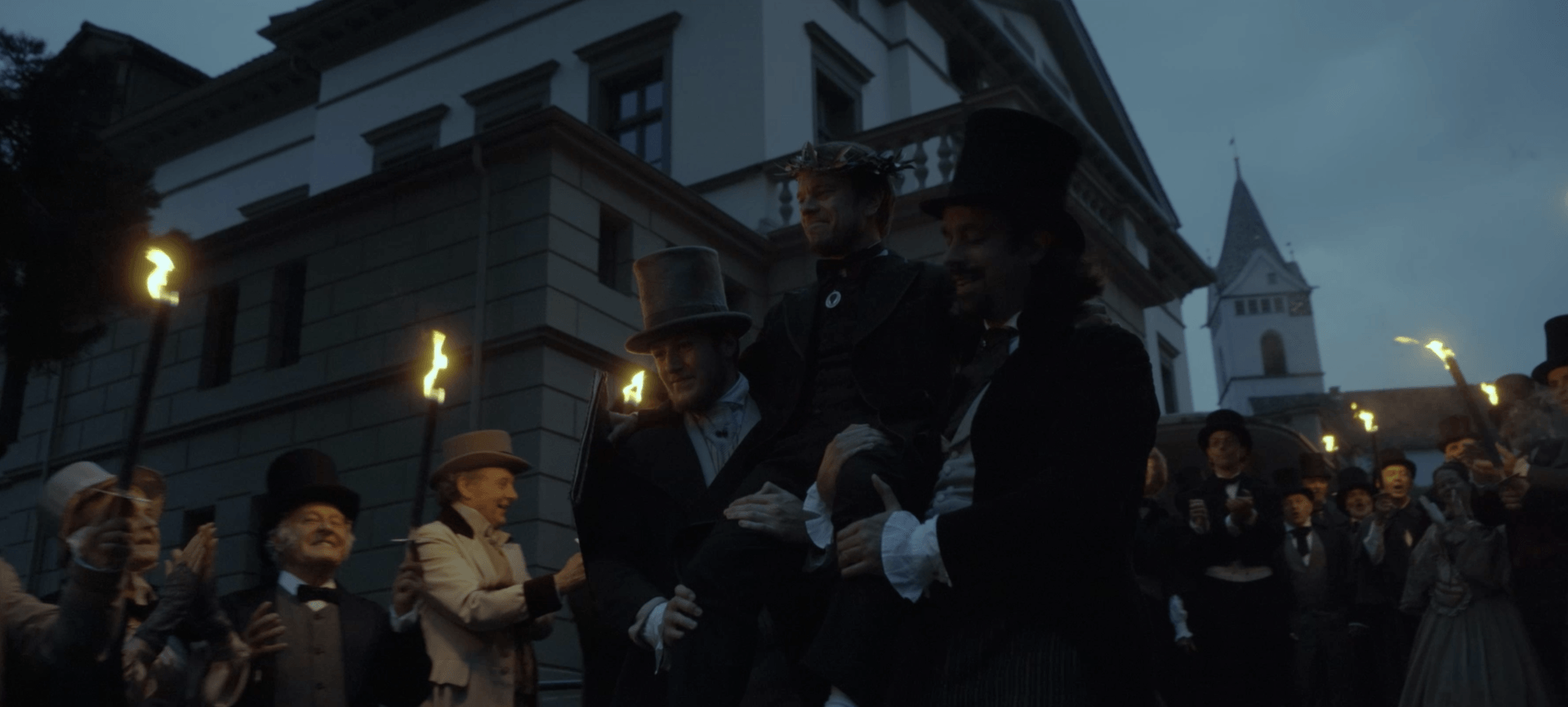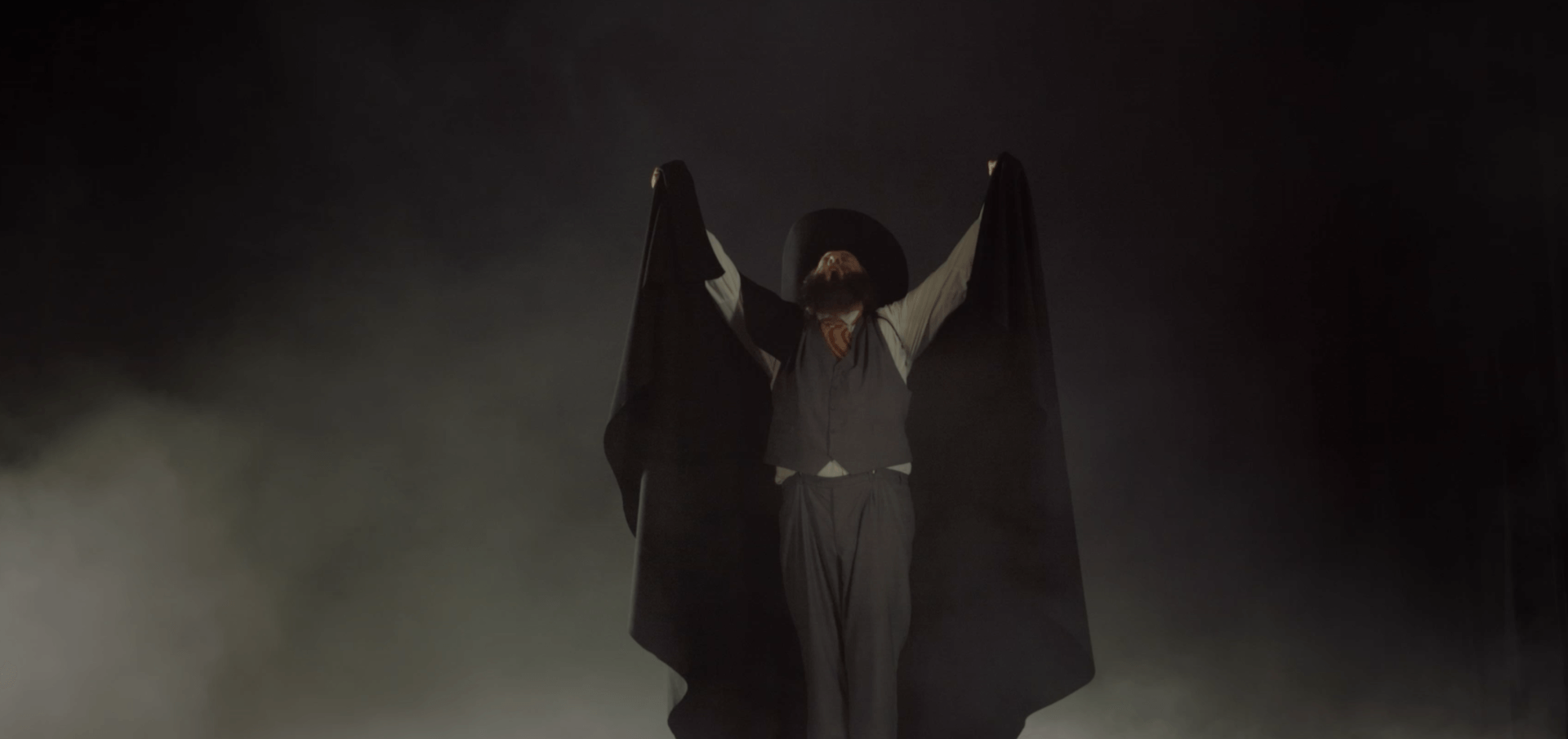THE ZURICH AFFAIRWAGNER LOCATIONS
-
Vordere Escherhäuser, Ground Floor / Zeltweg 11&13. Zeltweg 11, September 1851 till 17 April 1853. Zeltweg 13, till spring 1857. There is a commemorative plaque on the house in Zeltweg 13
Zeltweg -
Hotel Baur au Lac / Talstraße 1. Domicile of Otto and Mathilde Wesendonck from 1850–1857
Hotel Baur au LacThis is where Richard Wagner’s first public reading of the complete Ring oeuvre took place on 16th, 17th, 18th and 19th February 1853. The hotel was venue and meeting place of the Wagner circle for over seven years. The club Baur au Lac has been an intellectual centre of the Limmat town until today.
On 22 October 1865 Wagner himself sang parts of Siegmund and Hunding from the first act of “Walküre” in an improvised performance. Wagner was a tenor. Emilie Heim was sang Sieglinde, accompanied by Franz Liszt on grand piano.
-
Villa Schönberg, “Sanctuary” / Gablerstrasse 14. 28 April 1857 – 17 August 1858
"Asylum"Instead of the Villa Schönberg, which can now be found in this place, used to be a simple garden shed which Wagner inhabited from 1857 to 1858. He referred to this place as “Sanctuary”. Following his wife Mathilde’s wish, Otto Wesendock let the house opposite Villa Wesendock to the composer to prevent the property being used as an asylum. There, Wagner composed besides “Siegfried” the first act in three parts of “Tristan und Isolde”, as well as the five poems of Mathilde Wesendock, which would later be known as the Wesendonk-Songs. A bust of Wagner can be found beneath old Gingko trees as a reminder of the beginning of the modern age in Zurich.
-
Museum Rietberg, “Villa Wesendonk”
Villa Wesendonck -
Aktientheater / Obergericht Zürich
AktientheaterThe old stock theatre burned down in 1890 and was demolished afterward. Today the Obergericht Zurich can be found in its place. Wagner directed many opera performances in the “Aktientheater”, for example Beethoven’s Fidelio (1850/51), Weber’s Freischütz (1850/51), and performances of his own works (Der Fliegende Holländer, 1853 / Tannhäuser, 1855). In 1851, Wagner offered suggestions for the reorganisation of the Zurich Theatre in the reform-oriented paper “Ein Theater in Zürich”.
